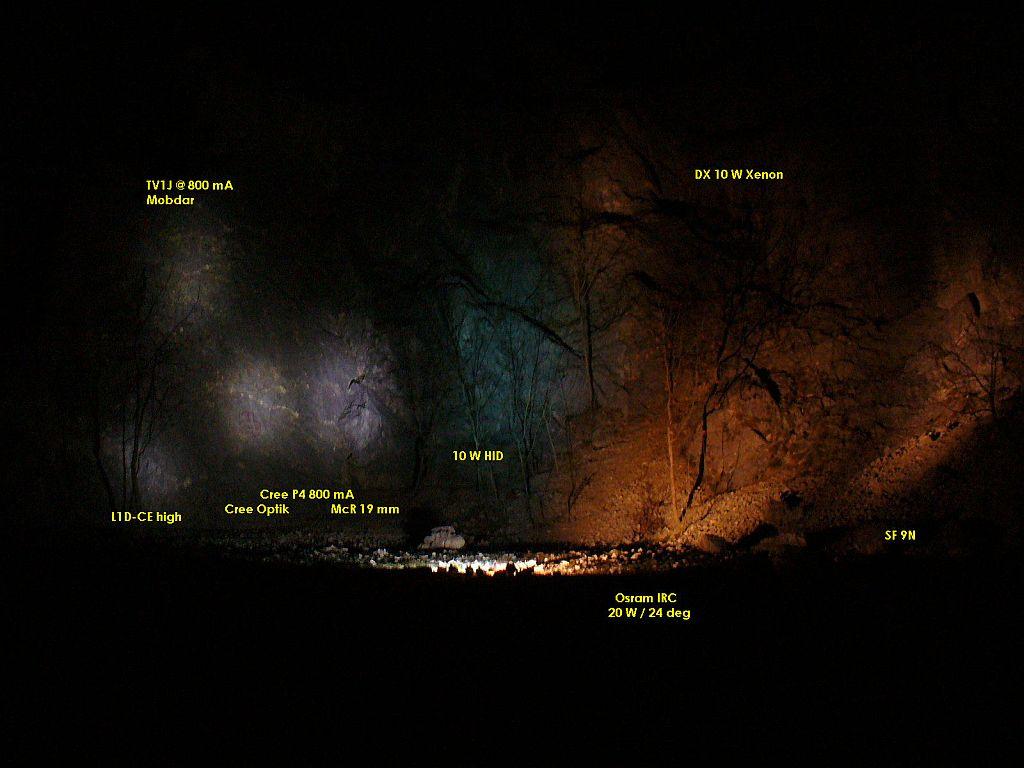yellow said:
Just one question:
Why? Do You use one?
I have used one and race night races with and alongside many people using them. Most of the serious 12 and 24 hour mountain bike racers use them. So, yes, and I stand by what I said. I have seen MANY in use and they look more white than my halogens, but not as white as the LED flashlights I took to use around camp at races.
I have tried LED and only some (like I said before) "white" tints, V1 in particular (which I prefer), give decent outdoor rendition and cut through humid summer air. I have spent a long time testing these against each other. Your beamshot is impressive, but pictures don't clearly show the true effect.
yellow said:
imho thats just good marketing of the producers for a technology they can press even more money out of the customers, than with led (based on the retail prices for we modders do have to pay).
And to give my point of view a bit of a background, here is a pic I took some 2 weeks ago.
As I already typed some times: maybe my model is bad (but the other HIDs (Edisons) I saw by now, have not been this different. No direct comparison by now) this underpower, blue/green whatever in the middle is a W-A 10 W HID, 13 degree bulb, the one most makers use. Run at a constant current of 10.8 V to the ballast (overpower but within specs).
I agree about HID marketing, but you DO seem to have a bad HID (old bulb? your camera's spectral capacity, something...) with some weird color does not look normal compared to any of the HIDs I have seen.
Look at the spectral chart compared to LED and incans - best easy to see example is in Surefire's 2007 catalog available on their web site. Wider spectrum (as I mentioned before) reflects more info back to the eye, and the human eye likes to see that red/orange wavelength missing from almost all "white" LEDs. Compared to halogen and xenon, there is admittedly better color rendition (remember, I don't actually favor the overpriced HIDs myself) because of the even wider spectral output. They are more white in most cases.
yellow said:
No chance to say, if the trail marks are blue, green or red from a short distance already. No good green (grass) or brown color showing. Brighter, but only awful compared to a good
single led emitter (on the left). A multiemitter with 3 or 4 led, running on roughly the same consumption will eat this one. (planning to built such a light in short)
imho HID is already outdated technology by now
but the show when powering up is great

The LEDs you refer to on the left have the same humidity reflectance problem that narrow spectrum LEDs have. The same reason actual "fog" lights are amber or yellow. They have a distinct lack of depth compared to the Xenon too. I will continue to believe my experience than one picture. That picture shows a 20W Xenon spanking your HID. Even though it is only a 10W HID (smallest available), it should not look that bad.
Your Cree are performing well at 800mA, but their performance is still tint dependant. The warm TV1J (my favorite tint from above) works better among LEDs, but even that can barely be seen in this picture.
I agree that HIDs days are numbered (as are incan) but they have life in them yet. I never really believed in HID myself much, though they are more efficient than incans. The expense (like I sad before) is too much.
I will wait for or make multiple WARM LEDs in a bike light, and then retest against my Vistalite HOT Halogen. I think I will run an LED/incan combo for a while.
Nice pictures and nice debating with you.



